Katey Schultz's Blog, page 4
December 8, 2015
Great Sites for Creative Types
 The Louisiana Channel on YouTubeThe “other” part of my writing life has to do with arts writing, and while I’ve truly enjoyed studying handmade artwork by the more than 70 artists I’ve interviewed for magazines and web content, I’ve had to develop a hard and fast rule about email lists as a result. Lest I want to receive dozens of e-newsletters a day, I typically unsubscribeto more lists in any given year than I ever subscribeto. Clearly, people I’ve overlapped with professionally are signing me up without permission—which may be fair, or may not be (Phil Hollows of Feedblitz will tell you that adding people without permission is not only spammy, it’s illegal).
The Louisiana Channel on YouTubeThe “other” part of my writing life has to do with arts writing, and while I’ve truly enjoyed studying handmade artwork by the more than 70 artists I’ve interviewed for magazines and web content, I’ve had to develop a hard and fast rule about email lists as a result. Lest I want to receive dozens of e-newsletters a day, I typically unsubscribeto more lists in any given year than I ever subscribeto. Clearly, people I’ve overlapped with professionally are signing me up without permission—which may be fair, or may not be (Phil Hollows of Feedblitz will tell you that adding people without permission is not only spammy, it’s illegal).Maintaining this filter has forced me to consider what I actually want and expect from an eblast. Preferences are going to vary, but I suspect a common denominator may look something like this: we want to be informed and/or inspired, we want to feel part of a pertinent conversation, and we only want to hear about direct sales/asks every once in a blue moon. I try to follow the 80/20 rule in my use of social media and eblasts (my “eblasts” are simply this blog, mailed twice a month as a list of 4 posts, to subscribers who opt-in using the sidebar on the left). This means that 4 out of 5 times, I'm sharing something interesting or pertinent or inspiring, and only 1 out of 5 times am I asking people to take direct action toward something.
Here are a few that I currently subscribe to, or have enjoyed regularly in the past:Austin Kleon’s weekly wrap-up is a very short list of 10 things he wants to share with others, from his musings and encounters throughout the week. Ranging from music to lectures to printmaking to film, rarely does a week go by when at least one of those links isn’t something that excites and informs me.Patricia Ann McNair offers a daily photo and sometimes the start of a first line, as a free journal prompt for her following of writers.Brian Castnerwrites about war, books, ebola, parenting, snow, and everything in between. He doesn’t post often, but when he does, I want to be sure not to miss out. His email subscription widget (at the bottom of his page) assures I won’t miss a post, and I don’t have to check his site all the time in order to be in the loop.David Abrams’ esteemed The Quivering Pen blog—I can’t say enough. For book lovers, for pay-it-forward thinkers, for lovers of literature. David is the cat’s meow, and so are his writing and sense of community spirit. There’s a reason is tagline is “book evangelism.” Weekly eblasts with links, good content, book giveaways, and more—sign up on the right sidebar of his page.And while these aren’t technically eblasts, there are a few YouTube channels I subscribe to. Each time a new video is posted (not very often), I have my settings arranged so that I receive an email with the link to the new content. Here’s who I’m currently digging:
The Louisiana Channel—I found this by accident, and love their literature videos. Short, professional, and deep.Sakyong Miphan Rinpoche’s YouTube Channel—timely, rich, Shambhala Buddhist-inspired snippets of insight (with the occasional full-length lecture thrown in) that I’ve followed for over a decade.A channel hosted by snakeBISHOP, which appears largely inactive, but the archives are worth scanning. Especially helpful with regard to the creative process for visual artists.Feel free to list your own favorite e-newsletters or YouTube channels in the comments. I found many of these by recommendation and would love to know what readers of The Writing Life enjoy most.








Published on December 08, 2015 06:00
December 4, 2015
Books Read in 2015: What I Loved and Why
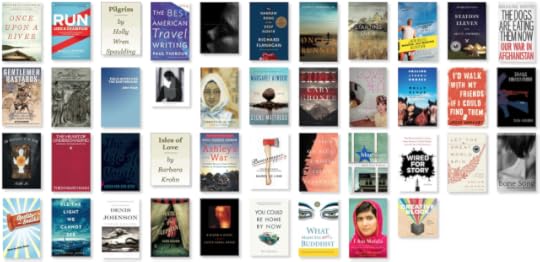 My Goodreads shelf for 2015.I read about 40 books per year, plus at least 12 unpublished manuscripts for critiques or blurbs annually, which means—by December 31st—I’m typically pretty close to reaching my goal of one book per week. Here’s what stands out to me from 2015, and why:
My Goodreads shelf for 2015.I read about 40 books per year, plus at least 12 unpublished manuscripts for critiques or blurbs annually, which means—by December 31st—I’m typically pretty close to reaching my goal of one book per week. Here’s what stands out to me from 2015, and why:This year, the most notable books of poetry I read were Bunny Goodjohn’s Bone Song and Abby E. Murray’s Quick Draw . I even informally interviewed Bunny about her book, here.
The book I read this year with one of the tightest narrative forms and structures I’ve seen in years was Tracy Manaster’s surprising You Could Be Home By Now . Although in the end, I didn’t feel as personally invested in the characters’ lives as I had hoped, I continued to marvel at this author’s craft on the page: managing multiple narrative threads, multiple points of view (and overlapping them in scene, at times), and seamlessly offering backstory and characterizing details at just the right times. Bonus: this book is funny!
The book I re-read this year…and take note, because I’ve only re-read about 10 books that I’ve loved in the past 10 years…is Bonnie Jo Campbell’s Once Upon a River. I re-read this for several reasons, the first being that when I read it in 2012, I was at a point of high skepticism in my approach to studying the work of others. I didn’t feel I had accepted the book on its own terms and wanted to read it again when I knew I had grown a little more as a writer and as a reader. Second, I read it to try to make sense of how the author, Bonnie Jo Campbell, keenly characterizes her protagonist Margo’s character in ways that allow her to justify her actions. Some of what Margo does might be seen as a “hard sell,” yet Campbell persuades readers again and again. I wanted to study how she pulled it off.
The book I read this year that was a true delight—in terms of craft, entertainment, structure, and story—was Mardi Jo Link’s Bootstrapper. While most folks will gloss over chapter titles and subtitles, a close reader will appreciate the many layers these small tools lend to Link’s book, which is a quick read but a deep plunge. I can’t wait to explore Link’s latest, The Drummond Girlsnext.
Last but absolutely not least, the most surprising book I read in 2015 was Denis Johnson’s Train Dreams. Maybe it’s because I’m from out West. Maybe it’s because I miss the landscape that made me. Maybe it’s because I’m a sucker for the ways in which landscape can shape character and reveal plot. Whatever the reasons, this book felt like being wrapped in warm blanket and being told my own, heartbreaking, creation myth. I loved every second, and cried throughout. I recommend this both in print and via Audible, as readers will find it moves along quickly—just a few hours, and this novella is done, but when you get up from the chair, you’ll be startled to find yourself in the present. This book transported me more fully than any other I’ve read in a long time.
There’s so much more to be said about this list—John Mauk’s Field Notes for the Earthboundor Holly Wren Spaulding’s Pilgrim, for instance, will make great gifts for the rockstar-quiet-mysterious-complex guy on your holiday list, and the Zen-nature-poetry-loving-minimalist on your holiday list, respectively. Graeme Smith’s The Dogs are Eating Them Now should be required reading for anyone with a vested interest in true war reportage and the hard lessons learned in the Middle East. And hands down, Creative Block , which I’m still finishing, is one of the best art/teaching books I’ve ever encountered.








Published on December 04, 2015 05:00
December 1, 2015
Give Yourself (or a Writer You Know) the Gift of Crafted Feedback
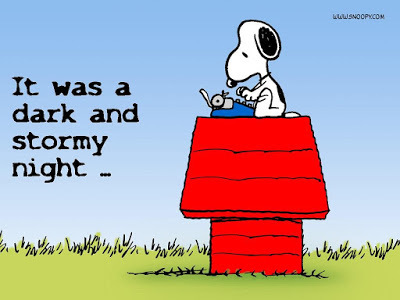 Snoopy the writer. Even writers hire writers! Let's do this!’Tis the season for many wonderful celebrations, and also the time of year when I start to enroll a few more private students in my
Monthly Critiques
services for Writer @ Large. This is my most popular program and participants can sign up for 4, 8, or 12 months at a time. Beginning in January, I have 3 spaces left for writers who would like to submit 10 or 20 pages of prose per month for critique. Here’s what others have said about this mentorship and feedback program:
Snoopy the writer. Even writers hire writers! Let's do this!’Tis the season for many wonderful celebrations, and also the time of year when I start to enroll a few more private students in my
Monthly Critiques
services for Writer @ Large. This is my most popular program and participants can sign up for 4, 8, or 12 months at a time. Beginning in January, I have 3 spaces left for writers who would like to submit 10 or 20 pages of prose per month for critique. Here’s what others have said about this mentorship and feedback program:“I've learned to think critically about language, to consider the impact of setting and landscape. My writing has become richer and better for it. I'm very grateful for your advice and comments, and your considered opinions about the work I've put forward. You have such a talent for teaching and mentorship. I am so fortunate to have the opportunity to work with you." (Heather Clitheroe, award-winning short story writer)
I also have an opening for a full Manuscript Critique during April, June, or July. This involves sending all (or a large chunk of) your memoir, essay collection, short story collection, or novel to me in its most recent draft form. I’ll read your submission twice, then craft a personalized critique letter detailing the strengths of the work, the places I felt the prose coming up short, and a specific set of techniques and tools for addressing the manuscript’s shortcomings to propel you forward in revising your next draft. With a two-week turnaround time, this offering proves to be crucial for any writer seeking to publish his/her work and take their writing to the next level. A testimony:
"Katey is a careful and discerning editor, bringing the artist's sensibility and the editor's meticulous attention to detail to everything she does. Her insightful editing of several essays and my memoir has helped me identify and reduce abstractions, clarify detail and intensify scenes, and smooth the narrative flow while remaining true to the author's voice and intentions. I value Katey's input highly, and recommend her to anyone looking for professional and intensive guidance in his or her writing craft." (Shannon Huffman Polson, author of North of Hope)
Of course, Consultations can be scheduled at any time. All fees are listed here . To enroll in Monthly Critiques, reserve your Manuscript Critique, or schedule a Consult, email me now and I’ll get you signed up. NOTE: Writer @ Large gift certificates for services are also available—give the gift of writing mentorship and gentle deadlines to a writer (or budding writer!) you know and want to encourage. Email me for details.








Published on December 01, 2015 05:00
November 27, 2015
Selling Books by My Friends
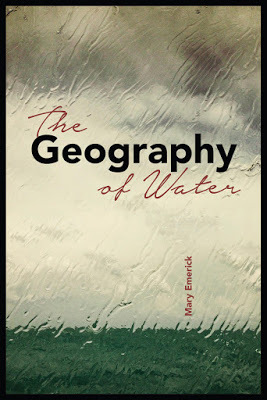 Tomorrow is Small Business Saturday and I'll be heading to Asheville, NC to celebrate at the esteemed indy bookstore, Malaprop's. These folks are nothing short of miraculous--with their hearts and their art in all the right places. I've been on hand with dozens of other regional authors for three years in a row now, celebrating Small Business Saturday by signing books and--most fun of all--selling books by my friends that Malaprop's has asked each author to hand-pick. This year, I've asked Malaprop's to stock
The Geography of Water
by Mary Emerick. I'll be talking it up from 11am-12noon on Saturday--come join me!
Tomorrow is Small Business Saturday and I'll be heading to Asheville, NC to celebrate at the esteemed indy bookstore, Malaprop's. These folks are nothing short of miraculous--with their hearts and their art in all the right places. I've been on hand with dozens of other regional authors for three years in a row now, celebrating Small Business Saturday by signing books and--most fun of all--selling books by my friends that Malaprop's has asked each author to hand-pick. This year, I've asked Malaprop's to stock
The Geography of Water
by Mary Emerick. I'll be talking it up from 11am-12noon on Saturday--come join me!Mary and I met in Wallow County in 2011 and shared hikes, pints, stories, and even a retreat down at Imnaha. She was also known to counsel me through a weak moment or two on my road-weary three-year adventures. Her novel writing is breathtakingly poetic, elevating the landscape to what it should be--a place of both refuge and wildness, of hope and fear. If you love adventure, if you love personal revelation, and if you love independent female characters, you will love The Geography of Water. (Bonus: You'll also come away feeling like you've just been to Alaska.)
Author-friends whose work I have gotten to sell in the past via the Malaprop's Small Business Saturday celebration include: Man Alive! by Mary Kay Zuravleff, The Long Walk by Brian Castner, and Temple of Air by Patrcia Ann McNair. I recommend all of these books as holiday gifts or simply as a little treat for yourself to read on the plane during any upcoming travels to see family. Soak it up!








Published on November 27, 2015 05:00
November 24, 2015
Thanksgiving Reader
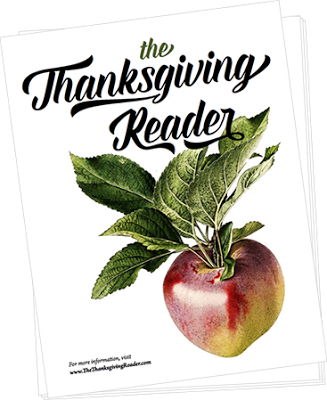 Today's post comes via blogger Seth Godin, a master of efficient, effective business-thinking geared toward honesty, progressive thought, and meaningful community. He offers The Thanksgiving Reader. Here's his wonderful message:
Today's post comes via blogger Seth Godin, a master of efficient, effective business-thinking geared toward honesty, progressive thought, and meaningful community. He offers The Thanksgiving Reader. Here's his wonderful message:"I’m hoping that this year, you and your family will help us start a new holiday tradition. The idea is simple: At your Thanksgiving celebration (and yes, it’s okay to use it outside the US), consider going around the table and having each person read a section aloud. Before the meal starts, all you need to do is put one page on each person’s chair and follow the simple steps. During the ten or fifteen minutes your family spends reading together, millions of people will all be reading the same words, thinking about the same issues, connecting with each other over the essence of what we celebrate. After all the travel and the cooking and the hassle, for these few minutes, perhaps we can all breathe the same air and think hard about what we’re thankful for."Download The Thanksgiving Reader here, and please know that if you're reading The Writing Life blog, you're among those who I'll be thankful for, in particular, as we head into this holiday season.








Published on November 24, 2015 05:00
November 20, 2015
2016 Classes & Public Readings
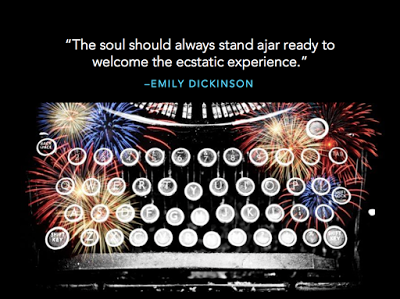
It's been a busy fall and I'm looking forward to a New Year full of offerings via distance, as well as in person. I've been able to firm up enough of my 2016 offerings to post them online (view the left sidebar of this site) and registration will open for most of these very soon. Upcoming highlights include:
Teaching Interlochen College of Creative Arts' first-ever online class!Visiting Virginia Military Institute and meeting more cadets (here's what meeting USAF cadets was like earlier this fall: part 1, part 2)Hosting a conversation with a few hundred artists about the anatomy of story for the Society of North American Goldsmiths' annual conference.I'm also enrolling right now for my Writer @ Large services begining in January. If you're interested in Monthly Critiques (my most popular program), please email me to reserve a spot. I have two openings remaining. Pricing info is here.
If you're interested in a Manuscript Critique--everything from line-level revision, to developmental editing, to a once-over reader response--book your slot now and get a deadline set for yourself. This is an exciting and enriching offering, often crucial for those of you writing longer bodies of work that you're eager to receive an "outside perspective" about. Email me directly for an estimate, or request a certain amount of time based on your budget.
Not sure? Check out these testimonials by clicking the link and scrolling down.








Published on November 20, 2015 05:00
November 17, 2015
Creative Flow: Outside the Box
I continue to sketch and freewrite each day, as well as keep my eyes and ears open to current thinking on creative flow exercises that assist writers (in particular) in thinking outside the box. I thought I’d take a moment to list a few resources I’ve enjoyed most recently:
Creative Block: Advice & Projects from 50 Successful Artists by Danielle Krysa (The Jealous Curator): This book is worth every penny and while I’m only 2/3 of the way through my copy, it is already marked up with tons of Post-It tabs. Each featured artists answers a series of questions about creative practice, creative blocks (and un-blocks), inner critiques, and inspiring individuals. The full-color, full-page images of each artists work likewise inspires and for those who want more, the book includes numerous of URLs and book titles for further reference and exploration.
A weekly e-newsletter from artist and author Austin Kleon: Let me begin by saying I subscribe to very few e-newsletters. Delightful mixed-media artist and writer Suzi Banks Baum introduced me to this man’s work and, while I’ve only subscribed for a few months, I’ve rarely missed reading through what he sends out. His newsletter is simple: A list of ten things that are interesting to him at the time, from music to interviews to art books to things he discovered or experienced on his current book tour. This week, I most especially loved this 30-minute YouTube video of a talk he gave in a bookstore. If you’re pressed for time, just watch the second half, which has great images of famous artists’ and inventors’ journals.
Last but never least, one of my favorite books to turn to every winter, Wilderness by Rockwell Kent (with a foreword by Doug Capra) . A truly inspiring series of journal entries are paired with the utterly breathtaking woodblock prints of this artist, all set in one of my favorite places on earth—Alaska, dead of winter.








Creative Block: Advice & Projects from 50 Successful Artists by Danielle Krysa (The Jealous Curator): This book is worth every penny and while I’m only 2/3 of the way through my copy, it is already marked up with tons of Post-It tabs. Each featured artists answers a series of questions about creative practice, creative blocks (and un-blocks), inner critiques, and inspiring individuals. The full-color, full-page images of each artists work likewise inspires and for those who want more, the book includes numerous of URLs and book titles for further reference and exploration.
A weekly e-newsletter from artist and author Austin Kleon: Let me begin by saying I subscribe to very few e-newsletters. Delightful mixed-media artist and writer Suzi Banks Baum introduced me to this man’s work and, while I’ve only subscribed for a few months, I’ve rarely missed reading through what he sends out. His newsletter is simple: A list of ten things that are interesting to him at the time, from music to interviews to art books to things he discovered or experienced on his current book tour. This week, I most especially loved this 30-minute YouTube video of a talk he gave in a bookstore. If you’re pressed for time, just watch the second half, which has great images of famous artists’ and inventors’ journals.
Last but never least, one of my favorite books to turn to every winter, Wilderness by Rockwell Kent (with a foreword by Doug Capra) . A truly inspiring series of journal entries are paired with the utterly breathtaking woodblock prints of this artist, all set in one of my favorite places on earth—Alaska, dead of winter.









Published on November 17, 2015 05:00
November 13, 2015
Why Arcade Fire Should Rule the World
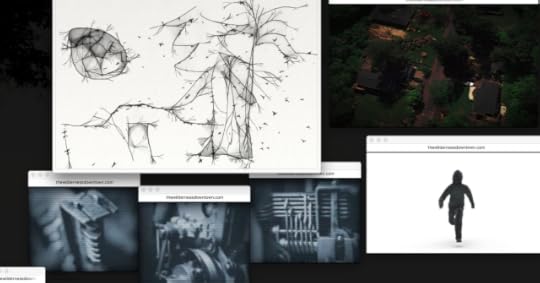 Screen shot from the live, one-time-only, uniquely generated music video created by Arcade Fire when I inputed the address of my childhood home. The upper left box is the postcard I "drew" in real time during the video and will be sent to the address I grew up at.Wrapping up this two-week conversation about healthy Internet practices, I want to celebrate a project—online—that’s innovative, artistic, exciting, and worthwhile.
Screen shot from the live, one-time-only, uniquely generated music video created by Arcade Fire when I inputed the address of my childhood home. The upper left box is the postcard I "drew" in real time during the video and will be sent to the address I grew up at.Wrapping up this two-week conversation about healthy Internet practices, I want to celebrate a project—online—that’s innovative, artistic, exciting, and worthwhile. Alt rock band Arcade Fire is very much “in the loop” when it comes to social media and online presence, not to mention their utterly epic discography and lyrics. But they also remember the feeling of snail mail. The freedom to wander the wilderness of downtown. The sound of shoes slapping a wet Pacific Northwest sidewalk. Their album, “The Suburbs,” is one of the single-most powerful lamentations on the loss of innocence for those of us who came of age before the Internet, cell phones, and 9/11.
Arcade Fire worked with Google and goodness knows who else to create an online music video portal for their song “We Used to Wait.” When you enter your address (of your childhood home, for instance), a music video is spontaneously created, set to a backdrop of images from your childhood neighborhood and overlaid with multiple windows running parallel narratives.
At the end of the one-of-a-kind music video, you get to create a postcard using your mouse and it gets mailed to the home you grew up at, providing the recipient with a link to a PDF of the postcard where they can type a response to you. No video is alike, although the same song will play for each person who enters his/her address.
Check it outthis weekend, if it feels fulfilling to you. I did it and it made me weep—I saw the driveway I spent hours playing in as a child, the wet pavement of Portland, the deep green of trees that shaded hours of my childhood playtime, the cracks in the pavement the dogs leapt over whenever they dug out of the backyard.
The Internet isn’t evil. It’s an almost unbearably powerful tool. These artists have done something incredible with it. Worth five minutes of my weekend? Absolutely.








Published on November 13, 2015 05:00
November 10, 2015
Only YOU Can Identify Rabbit Holes (Online, That Is)
I’ve thought a lot about how to answer the question about healthy Internet practices when it comes to reading articles and following links. I can only express what I’ve learned by way of a few personal example, building upon last week’s blog posts.
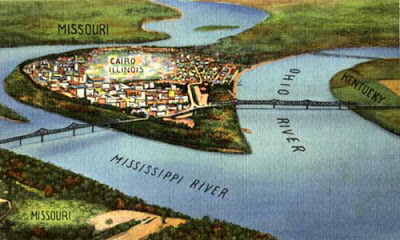 {source}First example: I’m writing a short story about a character whose hometown is Cairo, IL. As I worked on the story throughout the week, I had to look up some facts (how many square miles is the town?). I found the facts within seconds, but also noted other interesting links (a historical narrative, a piece on ghost towns, a description of levees). I did not read these articles when I found them. I saved them using Safari web browser’s handy “Reading List” tool. If you don’t use Safari, you can simply cut and paste the link from articles you want to read and keep them in an open file in Word. Just like you might use an “Emails to Send” file to compose while offline, you can create a “Articles to Read” file and treat yourself when the time feels right.
{source}First example: I’m writing a short story about a character whose hometown is Cairo, IL. As I worked on the story throughout the week, I had to look up some facts (how many square miles is the town?). I found the facts within seconds, but also noted other interesting links (a historical narrative, a piece on ghost towns, a description of levees). I did not read these articles when I found them. I saved them using Safari web browser’s handy “Reading List” tool. If you don’t use Safari, you can simply cut and paste the link from articles you want to read and keep them in an open file in Word. Just like you might use an “Emails to Send” file to compose while offline, you can create a “Articles to Read” file and treat yourself when the time feels right.
But that’s work, you might say. You’re a short story author. The distinction I make is this: I’m not at my desk when I read these articles, I’m not taking notes, I’m not reading for very long, and I’m not re-working my short story. Sometimes, the impulse to do so is strong. But I’ve found that if I trust my memory and the energy that’s paired with that impulse to return to the work, on Monday I can write more efficiently and powerfully because I was wholly focused and at ease when I absorbed the information in the article. I don’t read the article between a flurry of emails from private students or hosting organizations. I read it during the open expanse of a day off, I ponder it, and I let my mind do its invisible work. If an image, fact, or idea really matters, it will still be there for me when I need it.
It’s my belief that this has everything to do with the theory of abundance. We don’t have to be slaves to everything around us. Everything will always be around us anyway! Trust in that, and we’ll find that instead of grabbing at things for fear they won’t always be available, instead, we have a world of inspiration at your fingertips because we can find it in almost anything we engage with.
Second example: Now I’m going to get a little direct. That awesome link you saw in your Facebook News Feed when you had only 45 seconds left of your daily 60 minutes online, or that very next link on the New York Times page you’ve got to follow. Guess what? Those articles will still be there when the weekend comes. The Internet is always there. But this moment, this thought, might not be. So enjoy the diversity of content and voices you can find online, but try using a tool like the Safari Reading List to enjoy all the perks of the content without actually being online (or being able to follow any links). Don’t use the Safari Reading List tool? No problem. It’s the weekend. It’s fine. Just read the article and enjoy it, relishing the fact that you’ve been waiting a few days to get to this and, as a result, you’re really going to focus and enjoy whatever that article contains. Desperate to leave a comment at the end of the article? Go for it. Getting lost by reading the comments thread? Well…
Here’s where we get to the third example: Rabbit Holes. I treat rabbit holes a lot like Smoky the Bear treats forest fires. “Only YOU can prevent forest fires!”…ergo, “Only YOU can identify rabbit holes.” I’m not a “commenter” and don’t read much online anyway (I prefer print). But if you read your news online, if you read comments, if you follow all the links and read the sidebars too, then this information is for you. It’s a simple calculation:
Is the activity bringing you joy? Does it feel fulfilling? Does it feel significant and, if so, significant as a means to what end?
Pretend your boss is there, in your house, on a weekend, asking you these questions. Your boss is a good boss. She has your best interests in mind. Now, answer honestly. I suspect most folks will find themselves back to that good ol’ idea of intention and tone. Where are you sitting when you’re “surfing”? How are you feeling? What is your posture like? Have you been outside yet today? What about that idea you had a while back to try and knit a scarf? Remember real mail—the beauty of sending it, waiting for it, tearing it open? Read the article you want to read online, sure, and then if it seems like something worth sharing, why not print it out and send it to a friend the old way?
…And speaking of real mail and of worthwhile links, stay tuned for my wrap-up of this topic in Friday’s post. I’ve found a group of artists who did something truly awesome. It started with memory, they responded with music, they partnered with Google, and now their project is completed, uniquely and over and over again, with a few keystrokes and clicks from viewers. It's pretty amazing.







 {source}First example: I’m writing a short story about a character whose hometown is Cairo, IL. As I worked on the story throughout the week, I had to look up some facts (how many square miles is the town?). I found the facts within seconds, but also noted other interesting links (a historical narrative, a piece on ghost towns, a description of levees). I did not read these articles when I found them. I saved them using Safari web browser’s handy “Reading List” tool. If you don’t use Safari, you can simply cut and paste the link from articles you want to read and keep them in an open file in Word. Just like you might use an “Emails to Send” file to compose while offline, you can create a “Articles to Read” file and treat yourself when the time feels right.
{source}First example: I’m writing a short story about a character whose hometown is Cairo, IL. As I worked on the story throughout the week, I had to look up some facts (how many square miles is the town?). I found the facts within seconds, but also noted other interesting links (a historical narrative, a piece on ghost towns, a description of levees). I did not read these articles when I found them. I saved them using Safari web browser’s handy “Reading List” tool. If you don’t use Safari, you can simply cut and paste the link from articles you want to read and keep them in an open file in Word. Just like you might use an “Emails to Send” file to compose while offline, you can create a “Articles to Read” file and treat yourself when the time feels right.But that’s work, you might say. You’re a short story author. The distinction I make is this: I’m not at my desk when I read these articles, I’m not taking notes, I’m not reading for very long, and I’m not re-working my short story. Sometimes, the impulse to do so is strong. But I’ve found that if I trust my memory and the energy that’s paired with that impulse to return to the work, on Monday I can write more efficiently and powerfully because I was wholly focused and at ease when I absorbed the information in the article. I don’t read the article between a flurry of emails from private students or hosting organizations. I read it during the open expanse of a day off, I ponder it, and I let my mind do its invisible work. If an image, fact, or idea really matters, it will still be there for me when I need it.
It’s my belief that this has everything to do with the theory of abundance. We don’t have to be slaves to everything around us. Everything will always be around us anyway! Trust in that, and we’ll find that instead of grabbing at things for fear they won’t always be available, instead, we have a world of inspiration at your fingertips because we can find it in almost anything we engage with.
Second example: Now I’m going to get a little direct. That awesome link you saw in your Facebook News Feed when you had only 45 seconds left of your daily 60 minutes online, or that very next link on the New York Times page you’ve got to follow. Guess what? Those articles will still be there when the weekend comes. The Internet is always there. But this moment, this thought, might not be. So enjoy the diversity of content and voices you can find online, but try using a tool like the Safari Reading List to enjoy all the perks of the content without actually being online (or being able to follow any links). Don’t use the Safari Reading List tool? No problem. It’s the weekend. It’s fine. Just read the article and enjoy it, relishing the fact that you’ve been waiting a few days to get to this and, as a result, you’re really going to focus and enjoy whatever that article contains. Desperate to leave a comment at the end of the article? Go for it. Getting lost by reading the comments thread? Well…
Here’s where we get to the third example: Rabbit Holes. I treat rabbit holes a lot like Smoky the Bear treats forest fires. “Only YOU can prevent forest fires!”…ergo, “Only YOU can identify rabbit holes.” I’m not a “commenter” and don’t read much online anyway (I prefer print). But if you read your news online, if you read comments, if you follow all the links and read the sidebars too, then this information is for you. It’s a simple calculation:
Is the activity bringing you joy? Does it feel fulfilling? Does it feel significant and, if so, significant as a means to what end?
Pretend your boss is there, in your house, on a weekend, asking you these questions. Your boss is a good boss. She has your best interests in mind. Now, answer honestly. I suspect most folks will find themselves back to that good ol’ idea of intention and tone. Where are you sitting when you’re “surfing”? How are you feeling? What is your posture like? Have you been outside yet today? What about that idea you had a while back to try and knit a scarf? Remember real mail—the beauty of sending it, waiting for it, tearing it open? Read the article you want to read online, sure, and then if it seems like something worth sharing, why not print it out and send it to a friend the old way?
…And speaking of real mail and of worthwhile links, stay tuned for my wrap-up of this topic in Friday’s post. I’ve found a group of artists who did something truly awesome. It started with memory, they responded with music, they partnered with Google, and now their project is completed, uniquely and over and over again, with a few keystrokes and clicks from viewers. It's pretty amazing.








Published on November 10, 2015 05:00
November 6, 2015
2 Hours Online per Weekend Could Be Your Trip to Maui
 {source}Continuing the conversation about healthy Internet practices (particularly for self-employed artists), I want to take a moment to address two big unknowns: What about managing Internet time on the weekend?
{source}Continuing the conversation about healthy Internet practices (particularly for self-employed artists), I want to take a moment to address two big unknowns: What about managing Internet time on the weekend?First, I think it’s crucial for self-employed artists to “claim their weekends.” It’s all too easy to work straight through, especially when you love what you do. Certainly, the occasional deadline or flurry with a new chapter warrants the indulgence. But the fact is, we’re in it for the long haul, a lifetime. Pacing ourselves and taking a break—even from things we love—makes us better at what we do. When we’re living our lives, whether that’s going on a run, raising a family, traveling to a new destination, gardening, volunteering, attending a concert, or going out for a beer, we’re diversifying our experience of the world and that will invariably influence the content of our artwork. It also means we’ll be that much more prepared and focused when we return to the task at hand come Monday—be that task email or artwork; we’ll be eager and ready, consciously attentive.
I’m only about a month into this new practice with the Internet, but what I’ve learned so far is that it’s helpful for me to be “a little loose” on weekends. I still “cluster” any time spent on the Internet so that it isn’t infusing my mornings, afternoons, and evenings—and sometimes I don’t get online at all. Regardless, I don’t check email unless I am looking for a specific message that I’m anticipating: an update about a friend in the hospital, a note from a jeweler working on a piece I commissioned, or a link to an online sale at Sierra Trading Post that I saw earlier in the week and now have time to indulge.
Repeat: I am not engaging in work-related messages during this time. I’m loosely aware of the clock, but what matters most to me on weekends is not necessarily a strict 60 minutes, rather, the intention and tone of my online activity.
Here’s where reading comes into play (and thanks for the great question in the comments!). On Tuesday, I’ll address what I’ve learned about a healthy balance for reading and “surfing” online. For now, if you’re not familiar with Safari web browser’s handy “Reading List” tool, check it out. It enables you to flag articles and links to read later, in full, offline.
~
*A note about today’s headline: I know it’s a bold statement, but for those of you who have a hard time setting boundaries with work-related tasks online over the weekend, read on…Say you get paid $40/hour or that your salary and benefits average out to a similar amount. Many of you get paid less, many of you get paid more, but go with this for a moment. If you get paid $40/hour, you’d rightfully insist on time-and-a-half for weekend work ($60/hour.) Now, pretend you spend only 2 hours online over the weekend, attending to work-related emails and following work-related links, or even doing some social networking in your professional field on Facebook or LinkedIn. You even enjoy this work, and feel informed and connected because of it.
The fact is, in a very short number of weeks, that $120 that you’re not actually getting paid, adds up. Do this every weekend for just one summer and you’ve spent 24 hours online doing work you weren’t paid for, but could have brought in $2880 if your boss or your business practices paid you what you’re worth. Guess what else you can do with $2880? Buy two round trip tickets from most of the 48 continental United States and go to Maui, with spare change for piña coladas and your SPF 50.








Published on November 06, 2015 05:00



